AN unwelcome fashion trend has reared its ugly head again this season – heroin chic.
With weight-loss drugs such as Ozempic becoming more popular, two major high street retailers have recently had images of models banned for being “ unhealthily thin ”.
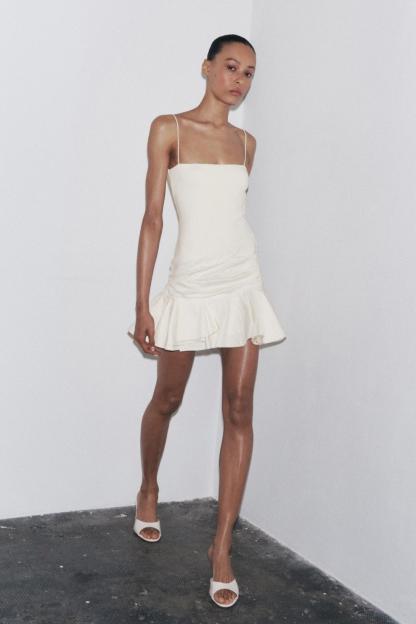 The Advertising Standards Authority ruled Zara’s images are ‘socially irresponsible’
The Advertising Standards Authority ruled Zara’s images are ‘socially irresponsible’
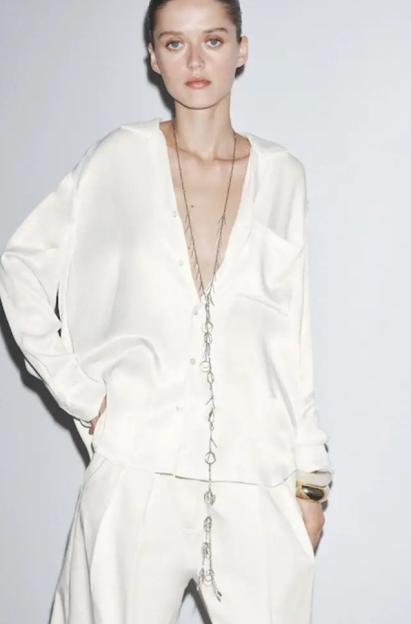 Zara was rapped for using this model in a white silk top and trousers who appeared to be ‘gaunt’ and showing ‘protruding’ collarbones
Zara was rapped for using this model in a white silk top and trousers who appeared to be ‘gaunt’ and showing ‘protruding’ collarbones
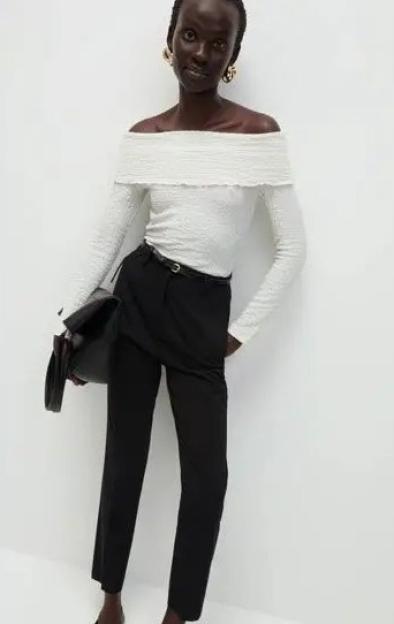 The model in the axed M&S advert is ‘unhealthily thin’, according to complaints
The model in the axed M&S advert is ‘unhealthily thin’, according to complaints
This week Zara was rapped by the Advertising Standards Authority for using a model in a white silk top and trousers who appeared to be “gaunt” and showing “protruding” collarbones.
It came after Marks & Spencer was branded “irresponsible” by the regulator for photographing a model in a white top and black jeans, emphasising the “slenderness of her legs”.
In fairness to M&S, and in my professional opinion, the model was shot at a bizarre angle from above, giving her alien-like skinny pins and a big head.
But where are the bigwigs at Marks & Spencer who should be saying, “Erm, she looks a bit thin — let’s ditch that pic”?
Retailers, their owners and employers have a responsibility to make sure their models are not being misrepresented and seen to be promoting aspirational fashion in a bad way.
Sadly, models’ figures that were once out of reach for us normal folk are now more attainable than ever, thanks to Ozempic and other fat jab treatments.
For me, it is sickening to recall the Nineties and Noughties era of skeletal celebrities, such as that god-awful image of Nicole Richie running down the beach looking emaciated, or even a young Kate Moss with her hip bones barely holding up her Calvin Klein underwear.
But the tide turned around 2012 when the stick-thin look was no longer considered ideal — and one woman who doesn’t get enough praise for that is Kim Kardashian .
With her thighs, boobs and bum, Kim alongside her sisters brought a new body image to the forefront of popular culture which embraced curves.
Her extreme dieting to fit into Marilyn Monroe ’s clothes may have landed her in hot water for setting a bad example, but she did a lot for making a curvy body sexy and aspirational.
We are facing a worrying return to using extremely thin models
Vogue magazine
Fast forward to today and its bye-bye booty, with Kim, Khloe and Kylie Jenner wasting away before our very eyes with their ultra-toned arms and tiny waists.
The body positivity movement peaked around 2015 when curvy models Felicity Hayward, Ashley Graham and Paloma Elsesser graced catwalks and ad campaigns to represent the majority of women (for context, the UK’s average dress size is 16).
But the box-ticking and virtue-signalling didn’t last long.
 Kim Kardashian, seen here at a Super Bowl bash in 2009, made fuller figures aspirational
Kim Kardashian, seen here at a Super Bowl bash in 2009, made fuller figures aspirational
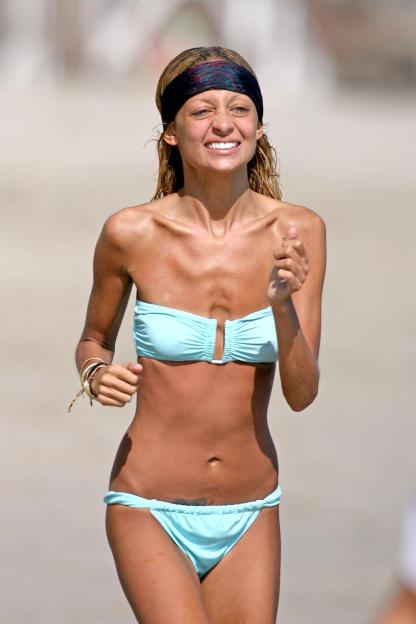 The Zara and M&S campaigns echo the sickening thinness of ’90s and ’00s skeletal celebrities, such as this photo of Nicole Richie
The Zara and M&S campaigns echo the sickening thinness of ’90s and ’00s skeletal celebrities, such as this photo of Nicole Richie
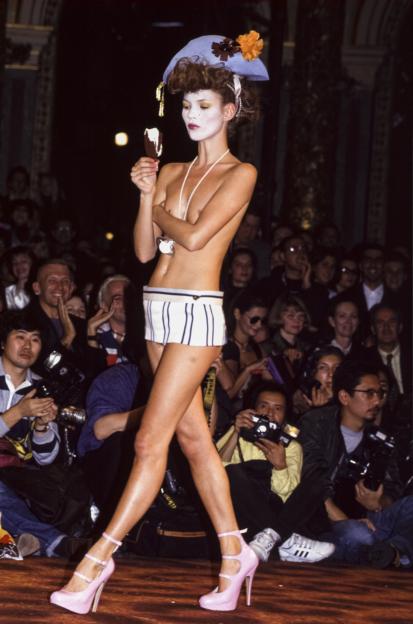 Another blast from an unpleasant past sees supermodel Kate Moss with her hip bones barely holding up her Calvin Klein underwear
Another blast from an unpleasant past sees supermodel Kate Moss with her hip bones barely holding up her Calvin Klein underwear
According to fashion data analysts TagWalk, only four of the top 20 brands featured during fashion week for Spring/Summer this year used curvy models.
Even fashion bible Vogue is becoming wary of how slim catwalk stars are looking, stating: “We are facing a worrying return to using extremely thin models.”
Since the fat jab boom began, celebrities and influencers have been glamourising the need to be thin.
‘It is a widespread shift and it is depressing’
A-list celebrities that were the first lot to get their mitts on Ozempic and Mounjaro suddenly shrank and conveniently put it down to that age-old line “a healthy lifestyle”.
Even singer Lizzo , who was known for embracing her curves, has been discussing her weight loss with Women’s Health magazine this week.
Body positivity is the radical act of daring to exist loudly and proudly. I like how I look now
Lizzo on her Ozempic use
The 37-year-old Juice hitmaker has previously admitted she tried Ozempic but now credits working out to being the reason for dropping a few dress sizes.
She says: “Body positivity is the radical act of daring to exist loudly and proudly” but adds, “I like how I look now.”
Fair enough. You do whatever you want to do, Lizzo.
But it is ironic that despite being proud of her curvier self before, she prefers how she looks now.
In 2023, US actress Mindy Kaling dramatically slimmed down, saying she had a new commitment to health and fitness.
Pull the other one Mindy. We’re not stupid. But at least she isn’t a loud and proud spokesperson for body positivity — curvy influencers are.
Women who have built an entire following, reputation and career around not being stick thin and celebrating loving every part of themselves — whilst insisting that you should do so too — are now turning their backs on all the female fans who have built them up.
The same famous women who claimed that their curvy body was normal and have maintained a healthy lifestyle their whole career are now putting their slim new look down to — you guessed it — a balanced diet and an extra-long dog walk.
And those of us who are committed to following these women then look at themselves and think, am I not good enough anymore?
It sort of feels like a betrayal or abandonment.
Jameela Jamil agrees. She revealed on Instagram that she had unfollowed many body positive ambassadors who “are now going full diet culture”.
The podcaster added: “Don’t perpetuate the culture that you rose to prominence trying to take down. It is a widespread shift we are all seeing everywhere and it’s depressing.”
The hashtag #thinspo, which promotes extreme thinness and disordered eating, has been banned on TikTok and Instagram .
But it still exists elsewhere on social media, and the similar tag #SkinnyTok surpassed 2.4billion views in June.
The terrifying amount of views reflects how women are scouring the internet looking for ways to get thin .
From celebs to influencers to fashion, the whole situation is a low-fat recipe for disaster — but sadly women and young girls are falling for it.
As someone who grew up and lived through the trend the first time around, I know it should not be repeated.
We’ve already said goodbye to low-slung jeans, pedal pushers, Uggs and other unlamented fashions of that era.
Like them, heroin chic should also remain firmly in the past.
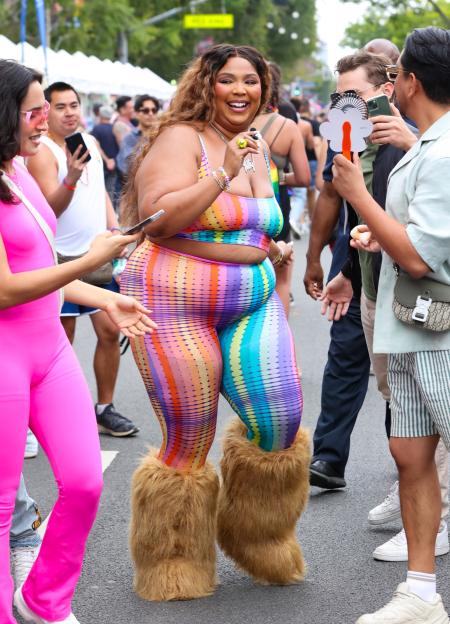 Even singer Lizzo, who was known for embracing her curves, has been discussing her weight loss with Women’s Health magazine
Even singer Lizzo, who was known for embracing her curves, has been discussing her weight loss with Women’s Health magazine
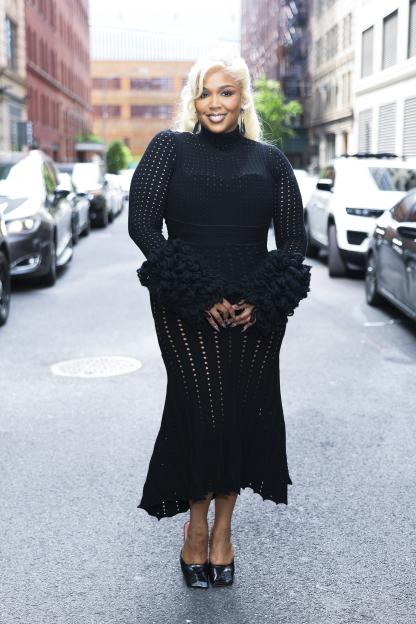 Lizzo’s slimmer shape in May this year
Lizzo’s slimmer shape in May this year







